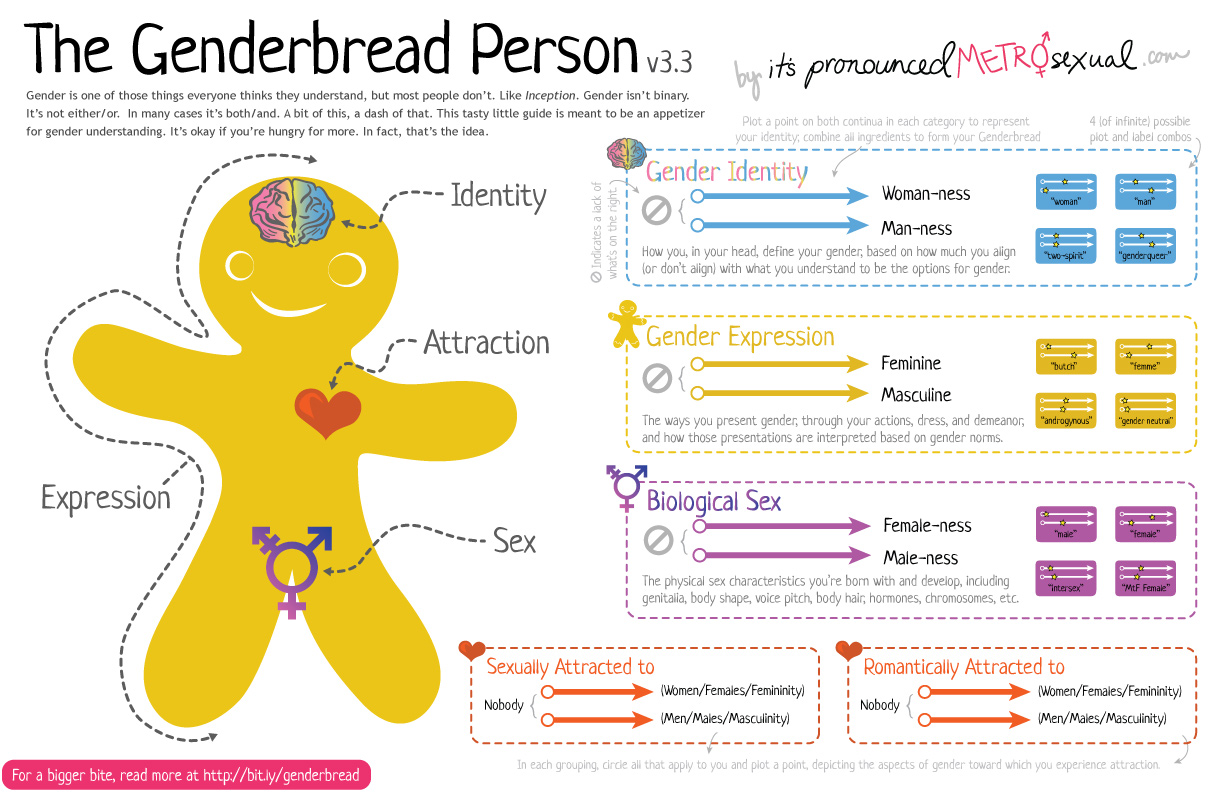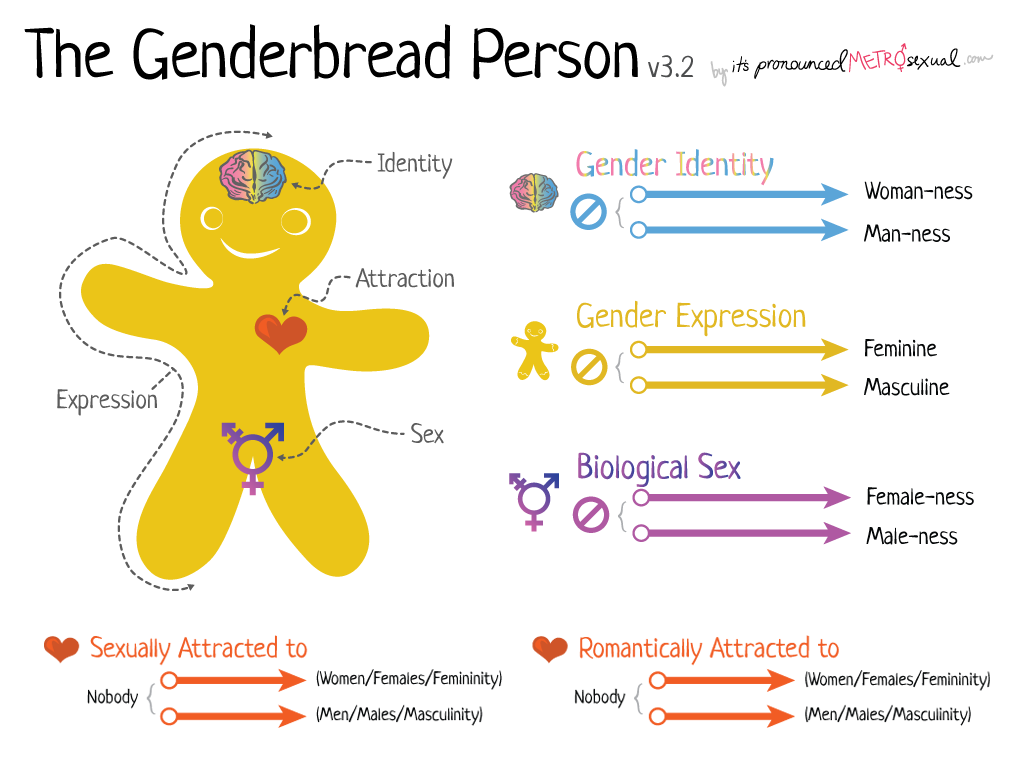Taking the lessons learned from version 2, and applying them to sexuality in a more meaningful way, here’s my best rendition of the genderbread person yet.
Hey! Friend! I published a version 4 of my Genderbread Person! It’s at least 33.333% better than this one. (Tbh, I think it’s better in every way, and anything you like about 3.3 can easily be remixed into v4) Check it out.Someone pointed out that I hadn’t shared this here yet, even though it’s been out for awhile. I am in disbelief about how long it’s taken me to get this up on the site. I really don’t know what happened — time flies? I created the first iteration of my version 3 of the genderbread person when I published my book back in 2013.
I’ve posted it on Facebook, it’s been translated a few times, it’s even been Santafied, and don’t have much of an explanation to share for why I’ve neglected to share it here. But… here it is! Sorry? Sorry.
What’s new?
There are two big differences from v2 to the most recent v3: separating romantic & sexual attraction, and the labeling of the continua. I’m also sharing it here with a more simplified version that I encourage folks to use for Powerpoints or to supplement any articles they’re writing, where the additional verbiage isn’t necessary.
Separating romantic and sexual attraction is a more accurate way of describing some of the ways we all experience attraction (or don’t), and it’s also an effort to make the graphic more inclusive of asexual folks. Check out this great article on Asexuality.org about sexual and romantic attraction if you’d like to read more.
Labels have always been one of the toughest parts of of the genderbread person, because in my versions I’m trying to simultaneously reinforce folks current understandings (or former, or problematic) of gender, while expanding and building upon their understanding, enhancing it, and making it a more honest depiction of the ways we all actually experience gender. Using the language that reinforces problematic and limiting understandings of gender as a means to expand understanding feels a lot like using the master’s tools to deconstruct the master’s house, and in this version I’m trying to get away from as much language as possible.
Here’s a testament to that “less language is better” sentiment, a more Powerpoint-friendly version you’re welcome to use:
What’s the same?
It’s still totally uncopyrighted and yours to use however you’d like. No need to ask for permission.
It’s still based on the deconstruction of gender into identity, expression, and sex, building on my second and first versions of the genderbread person, which are my spin on the model that’s been around for a couple decades, which was based on the work of feminists from the past century.
And it’s still, I hope, as adorable as ever.



